- Cultivation of Redcurrant:
- 1. Planting:
- 2. Pruning:
- 3. Watering and Fertilizing:
- 4. Harvesting:
- Types of Redcurrant:
- Redcurrant Varieties:
- Choosing the Right Redcurrant:
- 1. Climate:
- 2. Soil:
- 3. Sunlight:
- 4. Space:
- 5. Variety:
- 6. Disease Resistance:
- 7. Harvest Time:
- 8. Pollination:
- Planting Redcurrant:
- Caring for Redcurrant Plants:
- Harvesting Redcurrant:
- Common Redcurrant Pests and Diseases:
- Pests:
- Diseases:
- Other Problems:
- Question-answer:
- What is redcurrant?
- How to cultivate redcurrant?
- What are the different types of redcurrant?
- How long does it take for redcurrant to grow?
- What are some popular varieties of redcurrant?
- Video: Propagating Redcurrants (Growing Free Fruit)
Redcurrant, also known as Ribes rubrum, is a popular fruit that is widely cultivated for its tart and refreshing taste. This small, bright red berry is a favorite among gardeners and fruit enthusiasts due to its rich flavor and versatility in culinary uses. Cultivating redcurrant requires careful attention to soil, climate, and pruning techniques to ensure a healthy and productive plant.
There are several types and varieties of redcurrants, each with its own unique characteristics. The most common types include the ‘Red Lake’, ‘Jonkheer van Tets’, and ‘Rovada’. ‘Red Lake’ is known for its high yields and vibrant red color, making it a popular choice for commercial growers. ‘Jonkheer van Tets’ is an early variety that produces fruit in June, while ‘Rovada’ is a late-maturing variety with large, juicy berries.
When cultivating redcurrant, it is essential to provide the plant with well-draining soil and full sun exposure. Redcurrants prefer slightly acidic soil with a pH level of 6-6.5, and regular watering is necessary to keep the soil moist but not waterlogged. Pruning redcurrant bushes should be done during the dormant season to remove old or diseased wood and encourage new growth.
In conclusion, redcurrant cultivation offers a rewarding experience for gardeners and fruit enthusiasts alike. With proper care and attention, redcurrant bushes can produce bountiful harvests of delicious berries that can be enjoyed in a variety of culinary applications. Whether you are a beginner or an expert gardener, incorporating redcurrant into your garden is sure to add a burst of vibrant color and flavor.
Cultivation of Redcurrant:
Redcurrants are small, tart berries that are native to Europe and Asia. They have a rich, bright red color and are often used in jams, jellies, and desserts. Redcurrant plants are relatively easy to grow and can be cultivated in a variety of climates.
1. Planting:
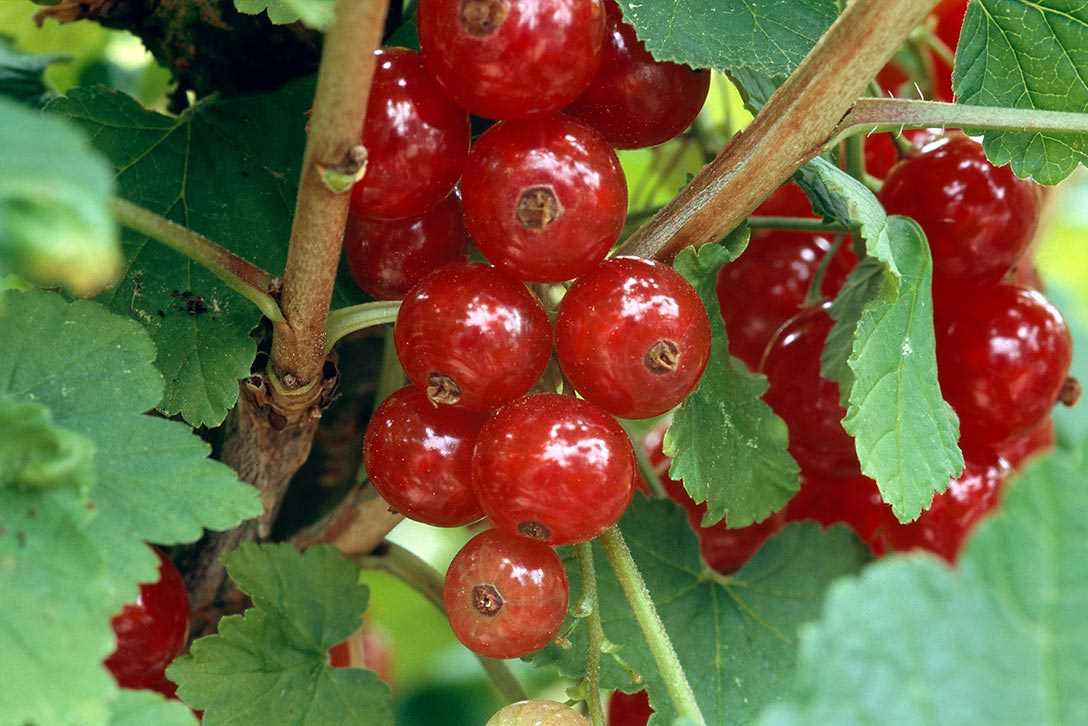
Redcurrant plants prefer well-drained soil that is rich in organic matter. They should be planted in a sunny location, although they can tolerate some shade. The plants should be spaced about 1 to 1.5 meters apart to allow for adequate air circulation.
It is best to plant redcurrants in early spring, before the growing season begins. Dig a hole that is twice the size of the rootball and place the plant in the hole, making sure that the base of the stem is level with the soil surface. Backfill the hole and gently firm the soil around the plant.
2. Pruning:
Pruning is an important part of redcurrant cultivation, as it helps to maintain the health and productivity of the plants. It is best to prune redcurrant plants in late winter or early spring, before the new growth appears.
Remove any dead or damaged wood, as well as any branches that are crossing or rubbing against each other. Thin out the center of the plant to promote airflow and prevent disease. It is also a good idea to prune the ends of the branches to encourage new growth and increase fruit production.
3. Watering and Fertilizing:
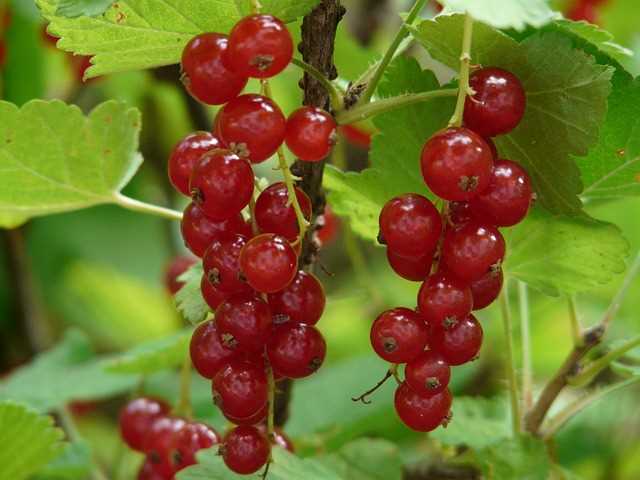
Redcurrant plants require regular watering, especially during dry periods. Keep the soil consistently moist, but be careful not to overwater, as this can lead to root rot. Mulching around the base of the plants can help to conserve moisture and suppress weeds.
Redcurrants also benefit from regular fertilizing. Apply a balanced fertilizer in early spring, before the growing season begins, and again in late spring or early summer. Follow the manufacturer’s instructions for application rates.
4. Harvesting:
Redcurrants are usually ready for harvest in late summer or early autumn, depending on the variety. The berries should be firm and brightly colored. Twist or gently pull the berries from the stem, being careful not to damage the plant.
Harvested redcurrants can be used immediately or stored in the refrigerator for up to a week. They can also be frozen for longer-term storage.
Types of Redcurrant:
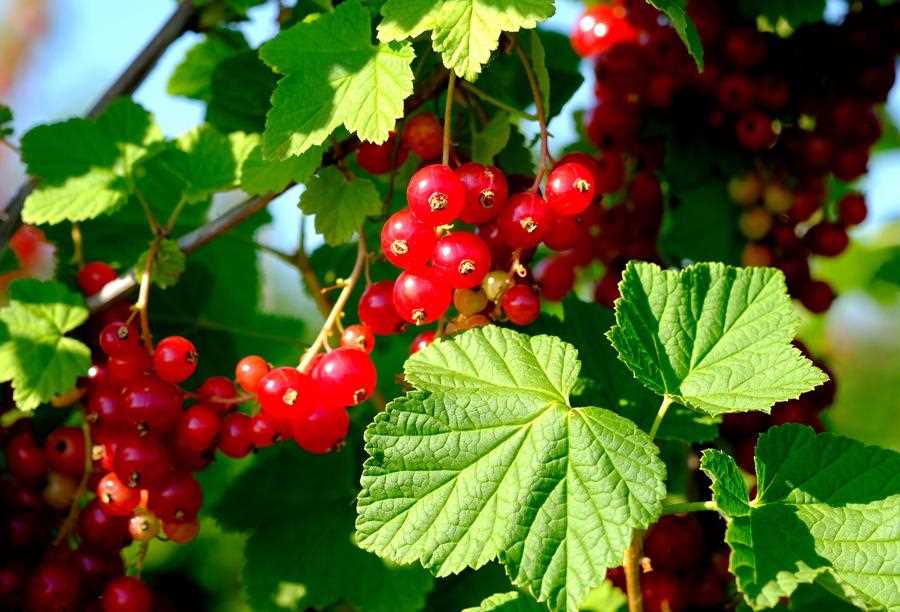
Redcurrants come in different varieties, each with its own unique characteristics. Here are some common types of redcurrant:
- Red Lake: This is one of the most popular redcurrant varieties. It produces large, bright red berries that are slightly tart and sweet. It is a vigorous plant with good disease resistance.
- Jonkheer van Tets: This variety is known for its early ripening. The berries are medium-sized and have a vibrant red color. They have a slightly acidic taste, making them ideal for jams and jellies.
- Junifer: Junifer is a versatile redcurrant variety that can be used for both culinary and dessert purposes. The berries are medium-sized with a deep red color and have a sweet-tart flavor.
- Red King: Red King is a high-yielding variety that produces large clusters of bright red berries. The berries are sweet and juicy, making them perfect for fresh eating or adding to desserts.
- Rovada: Rovada is a popular Dutch variety known for its long, conical-shaped berries. The berries have a bright red color and a sweet-tart flavor. They are excellent for making jams, jellies, and sauces.
These are just a few examples of the many redcurrant varieties available. When choosing a variety, consider factors such as taste, yield, disease resistance, and intended use to find the best option for your cultivation needs.
Redcurrant Varieties:
There are several popular varieties of redcurrants that are grown in gardens and used for culinary purposes. These varieties differ in terms of taste, size, color, and productivity. Some of the most common redcurrant varieties include:
- Jonkheer Van Tets: This variety is known for its bright red berries and early ripening. The berries are small but packed with a tart and tangy flavor.
- Rovada: Rovada is a popular variety that produces large, juicy, and flavorful berries. It is known for its high productivity and resistance to disease.
- Red Lake: Red Lake is another widely grown variety that produces clusters of medium-sized, bright red berries. It has a sweet-tart flavor and is often used for making preserves and desserts.
- Pink Champagne: Pink Champagne is a unique variety that produces translucent pink berries. It has a delicate and slightly sweet flavor, making it a popular choice for garnishing desserts.
- Titania: This variety is known for its large, firm berries that have a sweet and slightly tart flavor. Titania is also resistant to powdery mildew, making it a great choice for organic gardening.
These are just a few examples of the many redcurrant varieties available. Each variety has its own unique characteristics, so it’s worth exploring different options to find the ones that suit your taste and gardening preferences.
Choosing the Right Redcurrant:
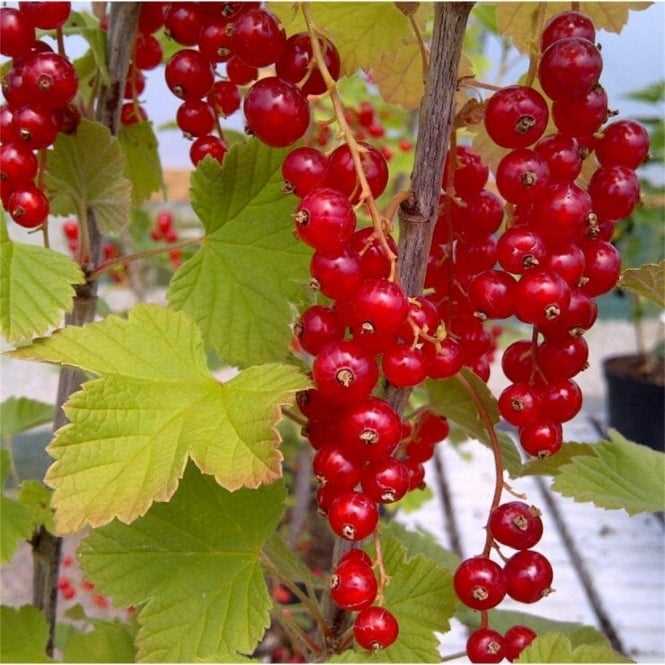
When it comes to choosing the right redcurrant for your garden or orchard, there are several factors to consider. Here are some tips to help you make an informed decision:
1. Climate:
Redcurrants thrive in temperate climates with cool summers and mild winters. They are hardy plants and can tolerate a range of temperatures, but they do best in areas with temperatures ranging from -15°C to 30°C (-5°F to 85°F).
2. Soil:
Redcurrants prefer well-drained soil that is rich in organic matter. The soil should have a pH level between 5.5 and 6.5. If your soil is too acidic, you can add lime to raise the pH level. If it is too alkaline, you can add sulfur to lower the pH level.
3. Sunlight:
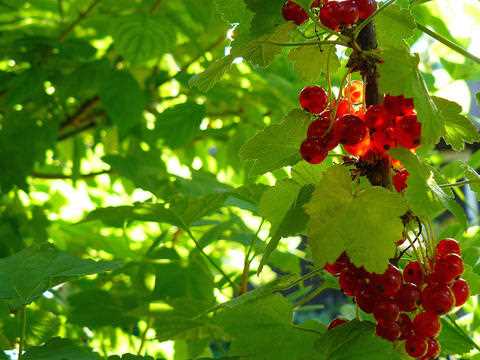
Redcurrants require full sun to produce their best crops. They should be planted in a location that receives at least 6 hours of direct sunlight each day. Avoid planting them in shaded areas or areas with less than 4 hours of sunlight.
4. Space:
Redcurrant bushes can spread out quite a bit, so make sure you have enough space in your garden for them to grow. Each bush should be planted at least 1.2 meters (4 feet) apart to allow for proper air circulation and sunlight exposure.
5. Variety:
There are several varieties of redcurrants available, each with its own unique characteristics. Some varieties are better suited for fresh consumption, while others are more suitable for processing into jams, jellies, or desserts. Research the different varieties and choose one that suits your specific needs and preferences.
6. Disease Resistance:

Some redcurrant varieties are more resistant to diseases and pests than others. Look for varieties that are known for their resistance to common redcurrant diseases, such as powdery mildew, rust, and aphids. This can help ensure a healthier and more productive crop.
7. Harvest Time:
Redcurrants have different harvest times, depending on the variety. Consider when you would like to harvest your redcurrants and choose a variety that ripens at that time. This will allow you to plan your garden and harvest accordingly.
8. Pollination:
Most redcurrant varieties are self-fertile, which means that they can pollinate themselves and produce fruits without the need for cross-pollination. However, planting multiple varieties can increase fruit set and overall yield. Consider planting different varieties to increase pollination and ensure a larger harvest.
By considering these factors and doing your research, you can choose the right redcurrant variety that will thrive in your garden and provide you with delicious fruits for years to come.
Planting Redcurrant:
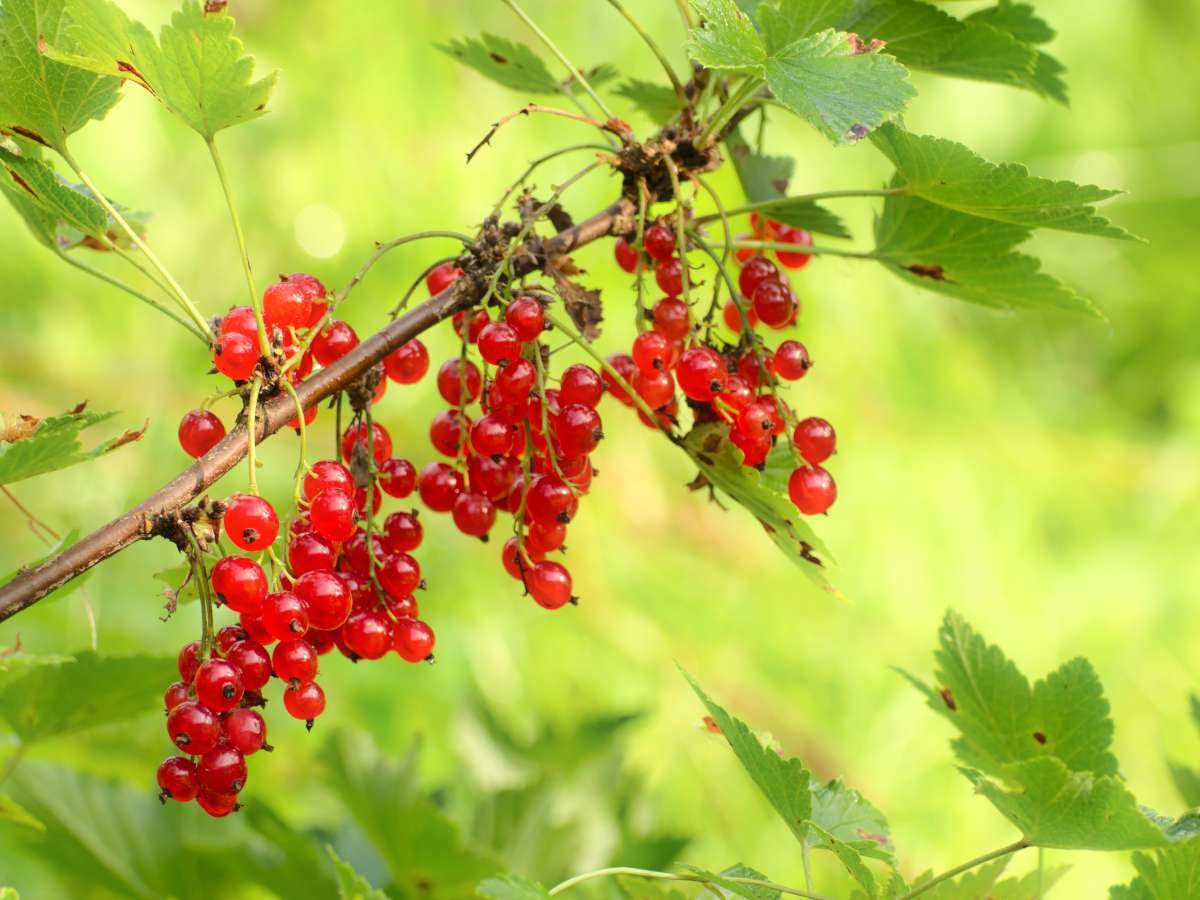
Redcurrant plants are relatively easy to grow and can be planted either in the spring or in the fall. It is important to choose a well-draining location that receives full sun or partial shade.
Soil Preparation:
- Choose a location with well-draining soil.
- Loosen the soil to a depth of at least 12 inches.
- Remove any weeds or grass from the planting area.
- Add organic matter, such as compost or well-rotted manure, to improve the soil fertility.
Planting Process:
- Dig a hole that is slightly larger and deeper than the redcurrant rootball.
- Place the plant in the hole, making sure that the bud union is level with or slightly above the soil surface.
- Backfill the hole with soil, gently firming it around the roots.
- Water the plant thoroughly after planting to settle the soil and provide moisture to the roots.
Spacing:
Redcurrant plants should be spaced about 4-6 feet apart to allow for adequate air circulation and sunlight penetration.
Maintenance:
- Water the plants regularly, especially during dry spells.
- Keep the area around the plants free from weeds.
- Apply a layer of mulch around the plants to help conserve moisture and suppress weed growth.
- Prune the plants annually to maintain their shape and remove any dead or diseased wood.
Pollination:
Redcurrants are self-fertile, but planting more than one variety can increase fruit set and improve overall yield.
Harvesting:
Redcurrants are typically ready for harvest in mid to late summer. The berries should be firm and fully colored. To harvest, simply pick the berries from the plant, being careful not to damage the fruit or the stem.
Caring for Redcurrant Plants:
- Planting: Redcurrant plants should be planted in well-drained soil in a sunny location. They can tolerate partial shade, but full sun is preferred. Space plants about 3-4 feet apart.
- Watering: Redcurrant plants need regular watering, especially during dry periods. Water deeply and infrequently to encourage deep root growth. Avoid overwatering, as this can cause root rot.
- Fertilizing: Apply a balanced fertilizer in early spring before new growth begins. Follow the instructions on the fertilizer packaging for the recommended dosage. Avoid excessive nitrogen fertilizers, as this can promote leaf growth at the expense of fruit production.
- Pruning: Redcurrant plants should be pruned annually to maintain shape and encourage fruiting. Prune in late winter or early spring before new growth begins. Remove any dead or damaged branches and thin out crowded growth to improve air circulation.
- Pest and Disease Control: Redcurrant plants are relatively disease resistant, but they can be susceptible to aphids, spider mites, and currant blister aphids. Monitor plants regularly and take appropriate action if pests are present. Remove and destroy any infected plant material to prevent the spread of diseases.
- Harvesting: Redcurrants are ready to harvest when they are fully colored and slightly firm to the touch. Gently twist or cut the clusters from the plant to avoid damaging the stems. The berries can be stored in the refrigerator for up to a week.
Note: It is important to monitor the plants regularly and provide appropriate care to ensure healthy growth and maximum fruit production. Regularly remove any weeds that may compete for nutrients, and provide support for the branches as they become laden with fruit.
Harvesting Redcurrant:
When it comes to harvesting redcurrants, timing is crucial. Redcurrants are best harvested when they are fully ripe, but still firm. This usually occurs in the mid to late summer, around July or August, depending on the variety and the climate.
Before harvesting, make sure to wear gloves to protect your hands from the sharp thorns on the redcurrant bushes. To harvest the berries, simply hold the stem of the cluster with one hand and gently pull the berries with the other hand. The berries should come off easily when they are ripe.
It’s important not to wait too long to harvest the redcurrants as they can become overripe and easily fall off the stems. Overripe berries are soft, mushy, and less flavorful.
After harvesting, it is advisable to avoid washing the redcurrants as it can reduce their shelf life. Instead, gently remove any leaves or debris and store them in a cool place, preferably in the refrigerator, to prolong their freshness.
Redcurrants can be used in a variety of culinary preparations, including jams, jellies, sauces, and desserts. They are known for their tart and tangy flavor, making them a popular choice for adding acidity and brightness to dishes.
With proper care and attention to timing, you can enjoy a bountiful harvest of delicious redcurrants from your garden. Happy harvesting!
Common Redcurrant Pests and Diseases:
Pests:
- Aphids: Aphids are small insects that feed on the sap of redcurrant plants. They can cause stunted growth, curled leaves, and reduce fruit production. Regular monitoring and the use of insecticidal soap or neem oil can help control aphids.
- Currant Clearwing Moth: The larvae of the currant clearwing moth feed on the wood of redcurrant plants, causing damage and weakening the plant. To control this pest, prune affected branches and use pheromone traps.
- Redcurrant Sawfly: The larvae of the redcurrant sawfly feed on redcurrant leaves, causing skeletonization and defoliation. Manual removal of larvae and the use of insecticides can help control this pest.
Diseases:
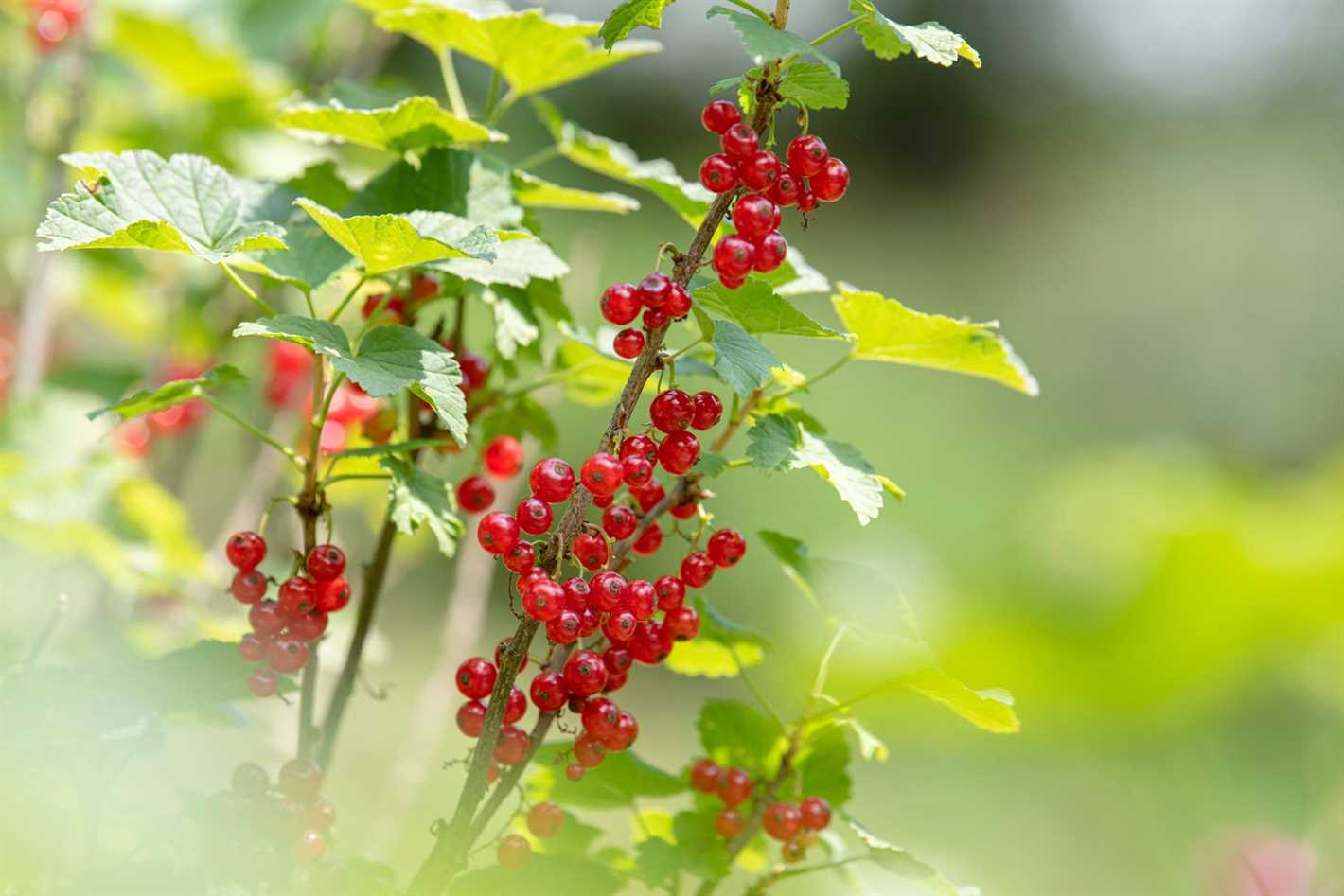
- American Gooseberry Mildew: This fungal disease causes a white powdery coating on redcurrant leaves and berries. Good air circulation, proper pruning, and application of fungicides can help prevent and control this disease.
- Ribes Rust: Ribes rust causes orange or yellow spots on the leaves of redcurrant plants. Regularly removing and burning infected leaves can help control the spread of this disease.
- Anthracnose: Anthracnose is a fungal disease that causes brown lesions on redcurrant leaves, stems, and fruits. Good sanitation practices, proper pruning, and fungicide treatments can help prevent and control this disease.
- Currant Blister Aphid: Currant blister aphids cause blister-like galls on the leaves of redcurrant plants. Pruning and the use of insecticides can help control this pest.
Other Problems:
In addition to pests and diseases, redcurrant plants may also suffer from nutrient deficiencies, improper watering, and extreme temperatures. Providing proper care, including regular fertilization, adequate watering, and protection from frost and heat, can help keep redcurrant plants healthy and productive.
Question-answer:
What is redcurrant?
Redcurrant is a small fruit that belongs to the genus Ribes in the family Grossulariaceae. It is similar to a gooseberry and has a tart flavor.
How to cultivate redcurrant?
Redcurrant can be cultivated by planting the seeds or by propagating cuttings. It requires well-drained soil and prefers a cool climate.
What are the different types of redcurrant?
There are several types of redcurrant, including ‘Jonkheer van Tets’, ‘Rovada’, and ‘Red Lake’. Each type has its own characteristics and flavor profile.
How long does it take for redcurrant to grow?
Redcurrant plants usually take about 2-3 years to start producing fruit. However, this can vary depending on the growing conditions and the specific variety.
What are some popular varieties of redcurrant?
Some popular varieties of redcurrant include ‘Jonkheer van Tets’, which has large berries with a sweet taste, and ‘Rovada’, which produces long clusters of tart berries.







